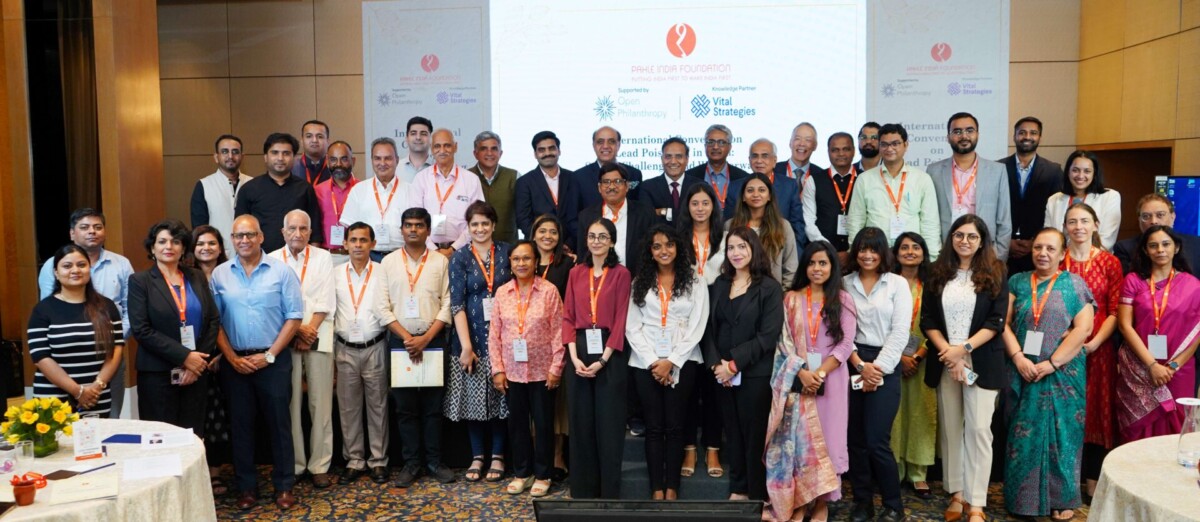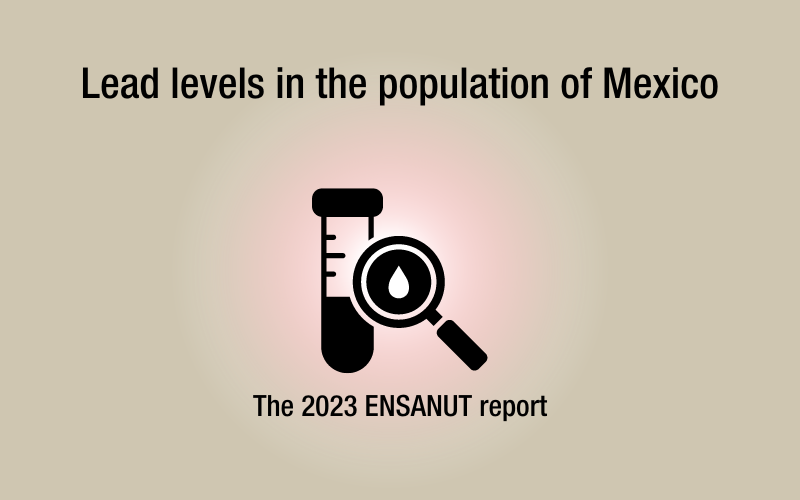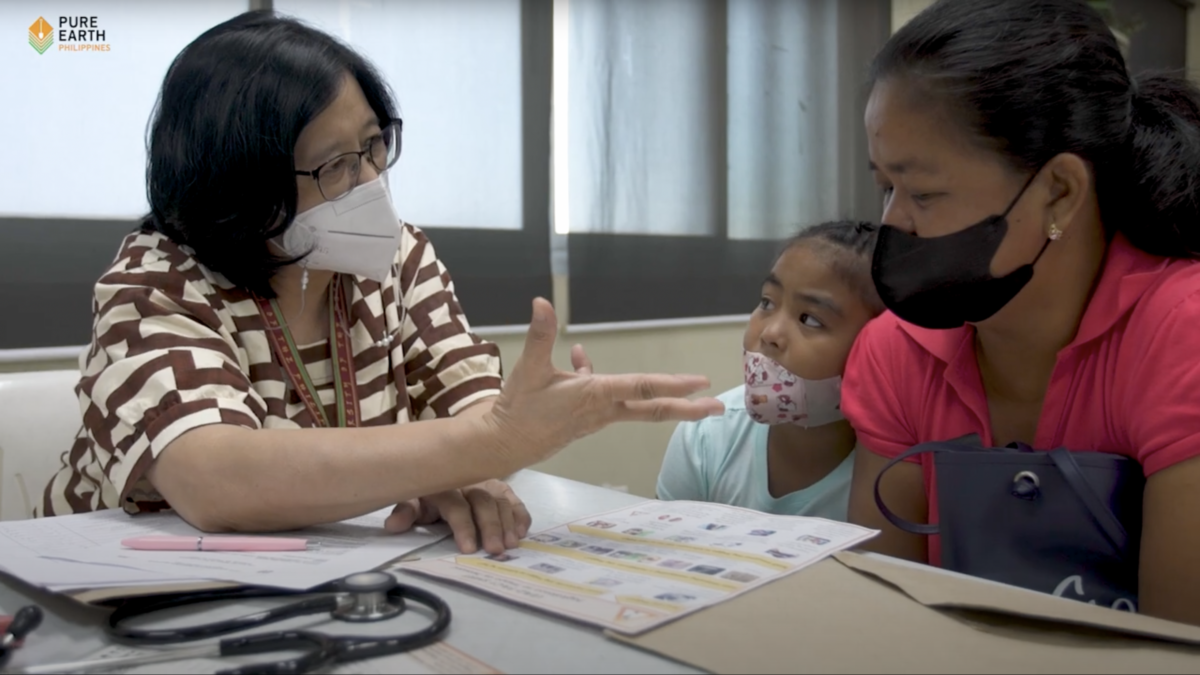Pure Earth’s Evolution Over 25 Years: A Q&A with Executive Director Drew McCartor
To commemorate our efforts to solve pollution over 25 years, we sat down with Executive Director Drew McCartor to hear about Pure Earth’s journey from a small organization remediating sites contaminated with toxic chemicals to a global leader in research and evidence-based solutions to lead and mercury pollution. The result is a firsthand tour of how Pure Earth has evolved to maximize impact, elevate pollution in global agendas, and disseminate its expertise globally. Along the way, Drew shares a number of exciting updates, including why Pure Earth is leaning into policy-based solutions, how an innovative new project is addressing lead-contaminated cookware in educational institutions, and what he loves most about his job. Here’s the full interview, lightly edited for length and clarity:
You’ve been with Pure Earth for 15 years, serving in positions throughout the Programs Department and leadership team, and now as Executive Director. How has the organization’s strategy shifted since you began?
Pure Earth has evolved in two major ways. First, we’ve adjusted our strategy based on what we’ve learned about different types of pollution, impacts, and challenges. For instance, we started out working on a large array of chemical pollutants, but gradually focused our portfolio on lead and mercury as we saw more evidence from the field of the outsized impacts from these two chemicals. Similarly, we started out primarily assessing and remediating contaminated sites. As we learned more about the industries responsible for those contaminated sites, our scope broadened and we got more involved in industrial products and processes as exposure sources. This, in turn, helped us learn more about the contribution to exposures from consumer goods and we saw more needs among communities to help address exposure sources in and around the home.
Second, we’ve adapted to the shifting needs and gaps that have emerged along the way. Once we see governments and other institutions can address a pollution issue without our help, we move on to address other gaps and needs. So, the evolution of the organization has really been driven by these twin factors of evolving knowledge and the needs of our beneficiaries.
Pollution has received a lot more attention in recent years. What role has Pure Earth had in elevating pollution’s profile in international development agendas?
While we certainly didn’t do it alone, Pure Earth has indeed played an important role in bringing chemical pollution and exposure to the attention of development agencies and decision makers. One of our first really influential products was the Lancet Commission on Pollution and Health. The commissioners included experts from many relevant disciplines from across the globe, but it was conceived and led by Pure Earth. Ultimately, what the Commission did was connect different forms of pollution to public health and economic impacts. For too long, pollution conversations had focused primarily on environmental audiences. But environmental ministries are rarely the most influential or well-funded agencies. Once you start connecting environmental challenges to health and economic outcomes, as the Lancet Commission did, you broaden your audience to include other highly influential groups–chiefly those concerned with public health and economic development. This was a crucial step in increasing the prominence of pollution in development agendas. The Commission was recently cited as a key influence in the creation of the UN-backed Science-Policy Panel on the Sound Management of Chemicals and Waste and to Prevent Pollution, which will serve as a priority-setting instrument for global action on chemical pollution.
Another turning point was the release of the Toxic Truth Report, which we published with UNICEF in 2020. What this report did for the first time was take newly available health impact estimates from the Institute for Health Metrics and Evaluations, tease out the specific impacts of lead on children, then communicate those impacts in a way that was impossible to ignore. And by impossible to ignore, I mean the finding that one in three kids globally has a concentration of lead in their blood that is high enough to cause permanent brain damage and IQ loss and exceeds the World Health Organization’s recommended threshold for intervention.
That’s such a startling statistic that it took years for influential policymakers to verify and absorb this information and say, “Okay, this is real and it’s a much bigger deal than we thought.” Four years on, we are now seeing a crescendo in awareness. I’ve been working on lead for almost 16 years and I’ve never seen more attention to the issue than in the last year. And in the last year, never more attention than in the last six months. And in those six months, never more attention than right now. We are seeing institutions like USAID, the World Bank, US EPA, and a variety of UN agencies, foundations, and others not only design new programs around lead, but engage their institutional megaphones to amplify the message.
And yet, even with the recent spike in awareness, you’ve said this issue still merits much more resources and funding. Why?
The best available estimates suggest that the world has invested only about $15 million annually to reduce lead poisoning in LMICs. If you are familiar with international development, you know $15 million is a paltry sum in this sector. We’re talking about a third of the world’s children, or about half of all children in LMICs, that have elevated blood lead levels. So even though we are seeing increased awareness, we still have not seen the world bring to bear the resources necessary to solve this. I’m hopeful this is changing though.
When we talk about lead poisoning in high-income countries, we often talk about gasoline, paint, and pipes. Why has Pure Earth pivoted towards other consumer products?
It’s true that, at least in the U.S., paint and pipes currently dominate the conversation. However, as we make progress on these well-known exposure sources, the relative impact of other sources, such as consumer goods, increases. Additionally, we are about to release new research suggesting that consumer goods, largely from overseas, already contribute substantially to lead exposures in the U.S. This issue has also been raised by groups like Consumer Reports and Healthy Babies, Bright Futures, which have released a stream of research about lead in imported food and consumer products. High profile recalls like the WanaBana applesauce have also raised public awareness. We are seeing an increase of support for the message in our 2019 report Pollution Knows No Borders that calls for investment in solving lead contamination overseas before it arrives in the U.S., thus protecting not only Americans, but communities globally.
One important fact to note is that exposure sources differ considerably from place to place, and also differ in our level of understanding and awareness. On one end of the spectrum, you have an issue like lead-based paint, which is a challenge in high-income and lower-income countries alike, and which has comparatively high levels of awareness. On the other end, you have an exposure source like lead-contaminated metal cookware, which appears to be more prominent in LMICs, and which has been the subject of relatively little research and, to my knowledge, no interventions apart from a new Pure Earth pilot project.
To better understand and bring attention to these lesser known exposure sources in LMICs, we launched the Rapid Market Screening Program, in which we tested lead levels in more than 5,000 consumer goods across 25 countries. We wanted to identify potentially significant drivers of lead exposure in different geographies, and to understand regional differences. The high prevalence of lead in consumer goods like metal and ceramic cookware, cosmetics, toys, and other goods was a surprise and is now an emerging research and intervention area for Pure Earth.
Let’s shift to the road ahead. What are Pure Earth’s strategic priorities between now and 2030?
One of our priorities is to make sure that Pure Earth is a hub for useful data, technical guidance, and effective intervention strategies. Whereas in the past we have spent a great deal of effort raising awareness about lead and mercury to create an enabling environment for action, today we are focused on developing and sharing the best possible information about exposure sources and solutions so that governments, corporations, civil society groups, and communities can prioritize actions and take the most effective steps to reduce risks. In other words, we want to take all of the lessons we’ve learned over the past 25 years, and make them readily available to the rest of the world. Because we can’t solve this on our own. In fact, we feel it will be national governments that ultimately drive large-scale change.
Another priority is impact. By impact I mean designing programs that maximize the public health and associated economic benefits per dollar spent. We have embraced a public health concept called the “prevention paradox,” which says that the greatest benefits to populations can be made by reducing exposures among a large number of individuals, including many low and medium risk individuals, rather than focusing interventions that target small populations of highly impacted people. In other words, designing measures that bring large benefits at the population levels, even though they may reduce individual risks more modestly. Take, for example, the impacts of addressing a contaminated site versus a consumer product. Cleaning up a toxic site provides dramatic benefits to local residents with extraordinary exposure levels, but the total number of beneficiaries is relatively low–in the hundreds, maybe low thousands. In terms of public good, this type of intervention doesn’t compare favorably to interventions that achieve more modest exposure reductions to huge populations, even if those populations have much lower exposure levels.
To be clear, we still believe there is a lot of value in remediation to demonstrate its feasibility and to reduce certain types of risks. And we’re pleased to see that some of our earlier site remediation work has now been embraced and picked up by governments, allowing us to move on to other priority issues in those countries.
However, if your goal is to impact large populations, improvements to policies, regulations, and enforcement mechanisms is key. A good example is our work in Georgia, where along with UNICEF, the government, and other actors, we helped benefit millions of people by stopping the practice of adulterating spices with lead-based pigments. That’s a level of impact you just can’t achieve through site-based interventions.
In addition to our embrace of the prevention paradox, we aim to increase our impact by focusing on other elements that include: 1) prioritizing regions and issues where we can affect large-scale change; 2) simplifying methods and tools to make them easier and cheaper to deploy; and 3) replicating and scaling up our intervention strategies by sharing knowledge, collaborating with partners, and growing the community of actors.
What’s one new project or research area you’re particularly excited about?
One really interesting new project is a relatively small pilot program we have in Ghana, India, and Indonesia in which we are sampling metal pots and pans in the kitchens of dozens of educational institutions that prepare meals for lots of kids. First we test the cookware with an XRF to determine if it has lead mixed in with the aluminum. If it does, we replace the institution’s pots with lead-free items, then continue to test food preparation with the lead-contaminated items. Our teams test the ingredients used in the kitchen to see if they are contaminated, and finally, using these ingredients and recipes, we test lead levels in the food that comes out of these contaminated pots, measuring the amount of lead that has leached into the food to see how it might influence the kids’ blood lead levels. As I mentioned, cookware has been an under researched, and potentially underestimated, exposure source. This project will help us determine whether something like a communal cooking pot in a school kitchen, for example, might contribute to exposure among a large group of kids. If so, simple and inexpensive pot replacement interventions might prove highly cost-effective for such contexts. The project may also help us understand regional variations in leachability and how the food preparation processes influence leaching. This project is really at the front edge of an emerging issue.
Final question, what do you find most inspiring about working with Pure Earth?
Of course, the mission of preventing exposures to toxic chemicals is itself hugely inspiring, but beyond that, one of the best parts of my job is being surrounded by colleagues who are not only wonderful, dedicated people, but are talented experts from a diversity of disciplines. Pure Earth’s staff includes pediatricians, toxicologists, environmental engineers, public health specialists, social scientists, and everything in between. Collectively, we have access to an amazing wealth of expertise. My colleagues are an inspiration and I’m proud to serve them and help provide them with the tools and support they need to make the world better.





